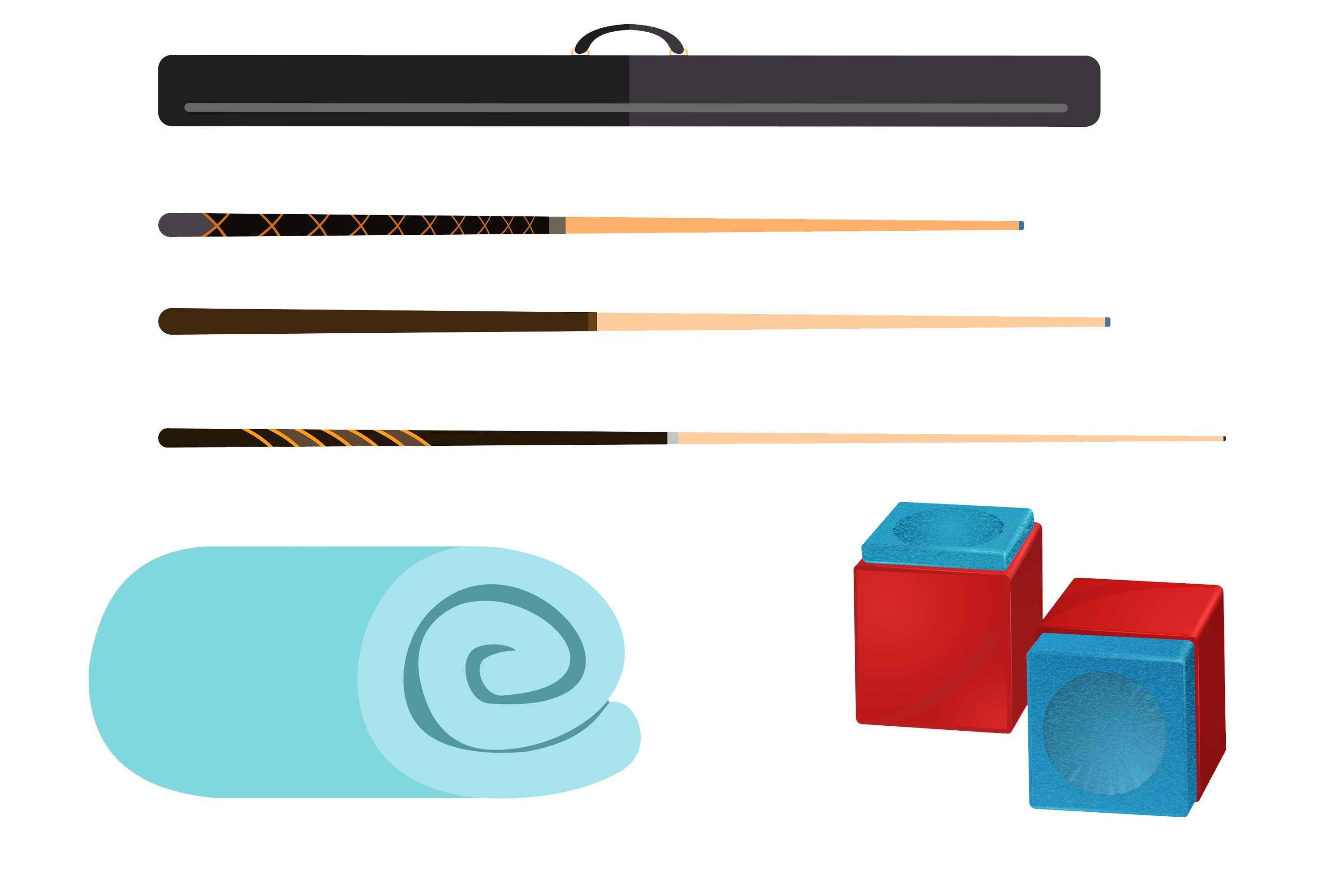Chapter 1
Choosing a Cue & Equipment

Karl’s bag contains his Predator equipment.
His bag includes:
- 1x Towel
- 3x Cues
- Spare Shaft
- Break cue - BK3 by Predator. Super light at 17 ounces
- Chalk
- Cue Extension
- Jump Cue
Karl prefers to have the weight taken out from the bottom of cue as he likes the feel better. Your personal preferences will come into play here. Predator cues allow you to slide in different weights at the back to adjust them to your preference.
Some people prefer their break cue heavier as they feel it gives them more power with their break, while Karl prefers his lighter as it feels better for him.
Break cues have extremely hard tips, like concrete. This is usually a preference for players when they like a hard tip to hit the break as solidly as possible.
Karl says he prefers both break and playing cues to have a leather tip, and to have both cues the same but with different weights. You should try this for yourself to see if it feels better for you.
Additionally, Karl has two cues as the break cue’s tip will eventually flatten out over time due to the force of the impact on breaks. If you can play with two cues this is generally recommended, as a flat cue tip can cause inaccuracy in your shots.
Karl plays with a Predator Black 3 series. It’s a £1,000 cue and weighs 19 ounces.
Karl also carries with him a jump cue, which has a super hard tip in a similar fashion to the break cue. It has an adjustable length with a screw at the back, which makes it easy to adjust as necessary if the shot is short or longer.
Karl also doesn’t change his cue and cue tips often. He prefers to play and get used to his cue, instead of dealing with constant change.
Pool cues differ from snooker cues, which can vary greatly; losing your snooker cue can be problematic for a player who has become used to their cue. American cues are as interchangeable as tennis rackets, which is explained by Karl in the video.
In other words, don’t worry about your perfect cue, as you can always pick up another and play just as well!